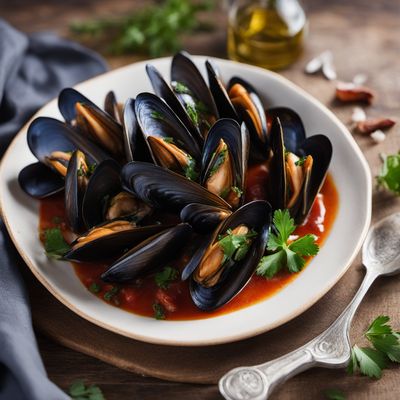
Ingredient
Vinegar, wine
The Tangy Elixir
Vinegar, wine is a fermented liquid made from the juice of grapes or other fruits. It has a tangy, acidic taste with varying levels of sweetness depending on the type and aging process. Vinegar, wine can range in color from pale yellow to deep red, and its consistency can be thin or syrupy.
Origins and history
The production of vinegar, wine dates back thousands of years, with evidence of its use in ancient civilizations such as Egypt, Greece, and Rome. It has been a staple ingredient in Mediterranean cuisine and has played a significant role in various cultural and culinary traditions. Today, vinegar, wine is produced worldwide, with different regions specializing in specific types of vinegar and wine.
Nutritional information
Vinegar, wine contains acetic acid, which provides its tangy taste. It is low in calories and does not contain any fat or cholesterol. Some types of vinegar, wine, such as red wine vinegar, may also contain antioxidants and other beneficial compounds.
Allergens
Vinegar, wine may contain sulfites, which can cause allergic reactions in individuals with sulfite sensitivities. Some people may also be sensitive to the acidity of vinegar, wine and experience digestive discomfort.
How to select
When selecting vinegar, wine, choose varieties that are made from high-quality grapes or fruits. Look for clear, bright liquids with a balanced acidity and a pleasant aroma. For wine, consider the flavor profile and sweetness level that best suits your recipe. Red wine vinegar is commonly used for marinades and dressings, while white wine vinegar is often used for lighter dishes and sauces.
Storage recommendations
To maintain the quality of vinegar, wine, store it in a cool, dark place away from direct sunlight and heat. Wine should be stored horizontally to keep the cork moist and prevent oxidation. Once opened, vinegar, wine can be stored at room temperature, while wine should be resealed and refrigerated.
How to produce
Vinegar, wine can be produced through the fermentation of grape juice or other fruit juices. Amateur wine enthusiasts can consider making their own vinegar, wine by fermenting wine or fruit juice with specific bacterial cultures. However, this process requires careful monitoring and proper equipment to ensure a successful outcome.
Preparation tips
Vinegar, wine can be used in various recipes, such as salad dressings, marinades, sauces, and pickling. It can be drizzled over roasted vegetables, used as a base for vinaigrettes, or added to braised dishes for acidity and flavor enhancement.
Culinary uses
Vinegar, wine is commonly used in Mediterranean, French, and Italian cuisines. It is a key ingredient in classic dishes such as balsamic vinaigrette, coq au vin, and tomato sauce. It is also used in pickling and preserving fruits and vegetables.
Availability
Vinegar, wine is commonly available in grocery stores, supermarkets, and specialty food stores worldwide.
More ingredients from this category
Recipes using Vinegar, wine » Browse all

Hungarian Beef Bourguignon
Goulash-inspired Beef Stew

Pitina all'aceto
Savory Vinegar-Marinated Pitina Delight

Castilian-Manchego Esgarrat
Smoky Roasted Peppers with Salted Cod: A Taste of Castilian-Manchego Cuisine

Spanish-style Braised Rabbit
Savory Delight: Spanish Rabbit in Salmorejo Sauce

Zesty Istrian Rabbit Stew
Savory Delight: Zesty Istrian Rabbit Stew

Basque-style Onion Steak
Txuleton con Cebolla: Basque-inspired Onion Steak

Greek-style General Tso's Chicken
Mediterranean Firecracker Chicken

Eggs Benedict with a French Twist
Oeufs Bénédicte à la Française

Sweet and Sour Rabbit
Tangy Delight: Sweet and Sour Rabbit Recipe

Homemade Longaniza Sausage
Savory Spanish Longaniza: A Flavorful Sausage Delight

Pipirrana Rin-Ran
Andalusian Summer Salad: Pipirrana Rin-Ran

Spanish-style Marinated Mussels
Tangy Delights: Spanish-style Marinated Mussels